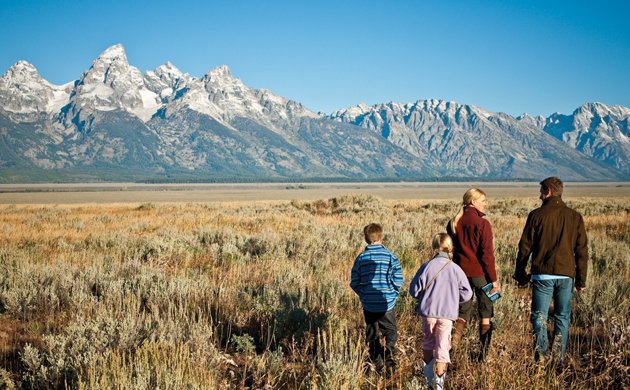
Created by Congress in 1965, the Land and Water Conservation Fund (LWCF) was a bipartisan commitment to safeguard natural areas, water resources and our cultural heritage, and to provide recreation opportunities to all Americans. National parks like Rocky Mountain, the Grand Canyon, and the Great Smoky Mountains, as well as national wildlife refuges, national forests, rivers and lakes, community parks, trails, and ball fields in every one of our 50 states were set aside for Americans to enjoy thanks to federal funds from the Land and Water Conservation Fund (LWCF). Photographs represent LWCF funded locations (click for large views).
It was a simple idea: use revenues from the depletion of one natural resource – offshore oil and gas – to support the conservation of another precious resource – our land and water. Every year, $900 million in royalties paid by energy companies drilling for oil and gas on the Outer Continental Shelf (OCS) are put into this fund. The money is intended to create and protect national parks, areas around rivers and lakes, national forests, and national wildlife refuges from development, and to provide matching grants for state and local parks and recreation projects.
Yet, nearly every year, Congress breaks its own promise to the American people and diverts much of this funding to uses other than conserving our most important lands and waters.
As a result, there is a substantial backlog of federal land acquisition needs estimated at more than $30 billion—including places vulnerable to development such as the Florida Everglades, Petrified Forest National Park in Arizona, Civil War battlefields in Virginia and other precious places around the country. State governments also report needing $27 billion in LWCF funds for eligible local parks and recreation projects1.
U.S. Secretary of the Interior Sally Jewell was so disappointed that congress has allowed America’s most important conservation program to expire that she issued the following statement:
“After 50 years of resounding success in enriching America’s great outdoors, the Land and Water Conservation Fund needlessly faces an uncertain future. I am extremely disappointed that, despite overwhelming bipartisan support, Congress has allowed this innovative and effective program to expire. As a result, America’s national parks are now at a higher risk of private development within their borders, we will have fewer tools to protect access to hunting and fishing spots, and local parks and open space projects in all 50 states may face delays or cancellation in the year ahead.”
“I join mayors, governors, and Americans across the country in urging Congress to reauthorize and fully fund the Land and Water Conservation Fund in order to honor our nation’s outdoor heritage and provide resources to local communities who want to invest in conservation, historic preservation and recreation opportunities. Future generations deserve nothing less.”
How ironic that on the 50th anniversary of this exceptional law, one legislator, Rob Bishop (R-Utah), Chairman of the House Natural Resources Committee, has taken it upon himself to block this program’s continuing conservation accomplishments.
The landscape known as the Crown of the Continent extends from northern Idaho and Wyoming through Montana to the Canadian border, linking the Greater Yellowstone and Salmon-Selway ecosystems and including Grand Teton, Yellowstone and Glacier National Parks. Widely regarded as the best opportunity for landscape-scale conservation in America and a model for public-private conservation efforts, like the Montana Legacy Project, this region has recently been a focal point for LWCF investment.
Through LWCF funding, willing-seller inholding purchases are safeguarding spectacular scenery and public access along the Flathead River south of Glacier National Park, and the vital grizzly migration routes and dense forest habitats of the Seeley and Swan Valleys. Key forest inholdings within the Greater Yellowstone Ecosystem have been secured through LWCF, including the New World Mine acquisition, which resolved a mining threat that could have been devastating to the Yellowstone River and the park itself.
Within Montana’s Rocky Mountain Front and Blackfoot River Watershed, conservation easements—largely funded by LWCF as well as the Forest Legacy and Cooperative Endangered Species Conservation programs—are being used to conserve thousands of acres and maintain the region’s ranching history. Ongoing priorities include inholdings in Grand Teton National Park where LWCF funding has forestalled potential sale and development of critical lands in the very heart of the park. Throughout the landscape these community based efforts are securing the public recreation, wildlife, and ranching heritage that makes the Crown of the Continent so unique2.
In addition to all the grandiose projects listed above (and these are only a few examples of what the LWCF supports), the Land and Water Conservation Fund plays a key role in filling the need for close-to-home outdoor recreation. Each year, LWCF provides matching grants to states and local governments for the acquisition and development of public outdoor recreation areas and facilities. Funding from LWCF has enabled states and localities to leverage resources and rise to the challenge of providing enough open space to sustain vibrant, healthy communities for residents and visitors. Since LWCF was enacted, the state and local assistance grants program has leveraged $4 billion in federal grants with over $8 billion in matching funds to support more than 42,000 park, trail and recreation projects in virtually every county in America2.
The Land and Water Conservation Fund Coalition comprises over a thousand organizations—representing the recreation, outdoor industry, landowner, conservation, sportsmen, historic preservation, small business, and veterans communities—working together to support funding and reauthorization of the LWCF in order to meet America’s conservation and recreation needs in the 21st Century. They recommend the LWCF should be honestly budgeted at no less than the full, congressionally authorized level of $900 million annually to ensure that critical natural, historical, cultural and recreational resources are protected around the nation. They also recommend that no less than the $900 million deposited each year into the LWCF account from federal offshore oil and gas leasing revenues should be permanently dedicated to this purpose.
You can read the entire report on 50 Years of Conserving America the Beautiful to get the full impact of what this legislation accomplishes for the American people, then please go to their website and take action on this critical funding issue by signing on to support the LWCF as an organization and/or individual, and urging your legislators to support the appropriate senate and house bills. While you’re there, you can also look up how much the LWCF has invested in your state and which of your legislators are supporting the bills.
References:1Land and Water Conservation Fund, 250 Years of Conserving America the Beautiful


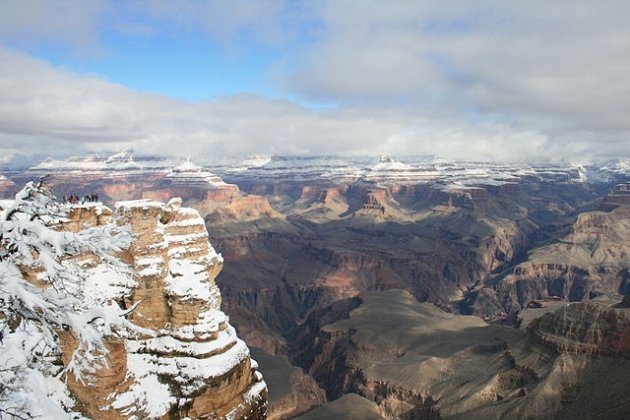
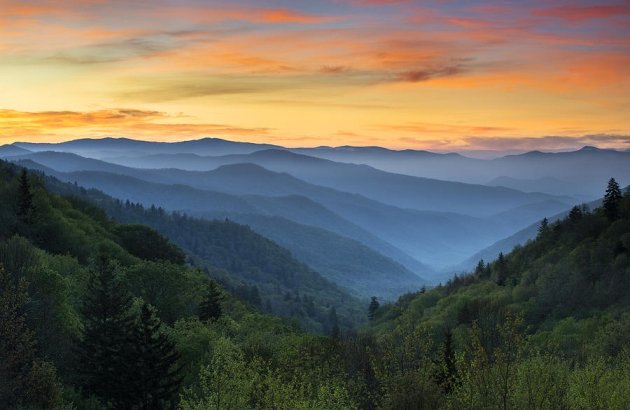
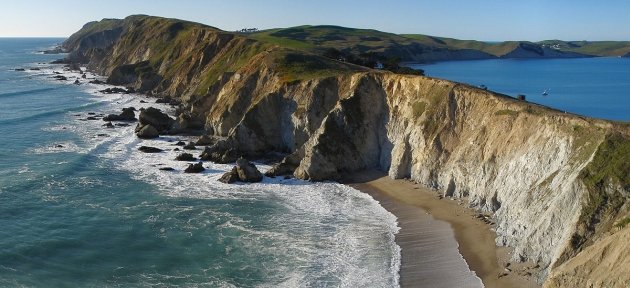
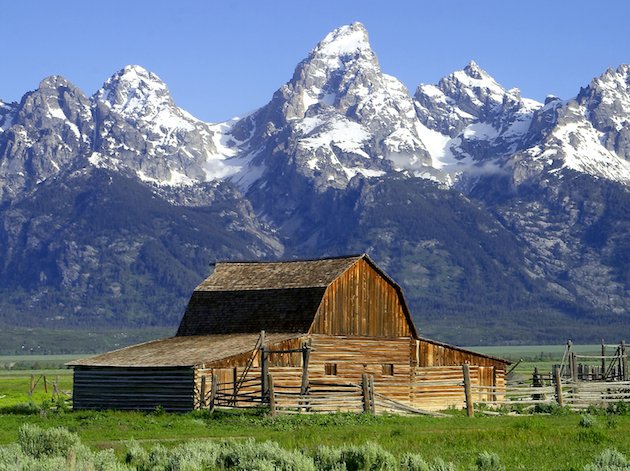
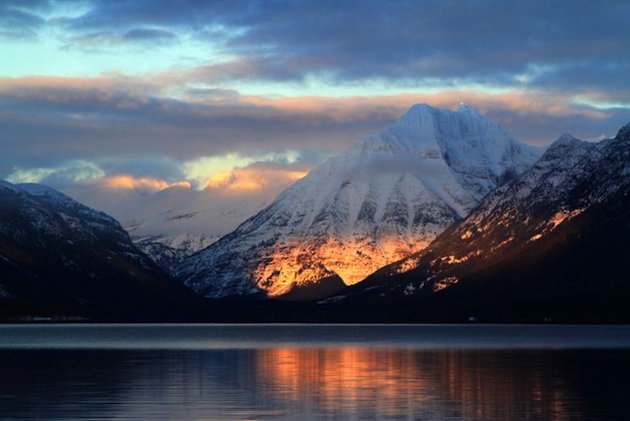
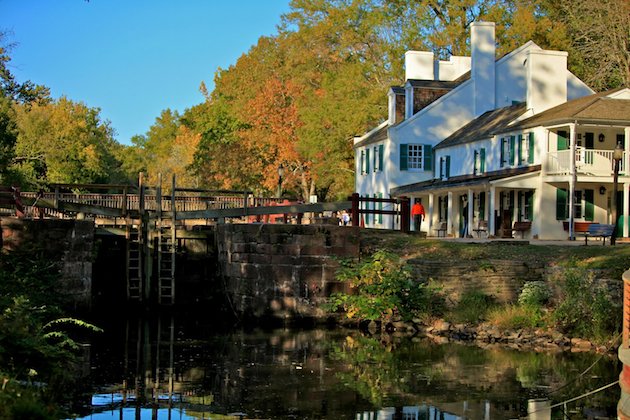










At this point I have little faith in Congress funding anything other than their own salaries. They’re talking of a shutdown over refugees fleeing Daesh for God’s sake!
Larry- Thank you for putting this together. I have been thinking about this subject for some time. I have been talking about a Wildlife Conservation or a Birding Stamp for a long time too. We seem to be on the same page. To Duncan- all of our elected officials become very rapid responders once they realize that there are Millions of people (birders) who vote. The question for our community is much simpler- why do we not support conservation more powerfully?
Again- Larry – Thank you! Great article
I guess several Republican politicians no longer believe in the inscription on the Statue of Liberty stating “Give me your tired, your poor, your huddled masses yearning to breathe free.”
Not much to say about the 114th congress that started out trying to shove the Keystone XL pipeline down our throats. Then proceeded to try to repeal the Antiquities Act that protects the aforementioned Statue of Liberty. I could go on but I think most of us understand the anti-environment Republican congress very well by now.
Thank you Timothy! And thank you for your work on the Prairie Chicken! I think you have a good point about birders supporting conservation more powerfully. I think most birders are environmentalists and conservationists but our support is divided up among several different environmental organizations. Maybe what we need is a lobbying organization?
One thing I do know, if birders had a wildlife conservation stamp we could be proud of, we could raise hundreds of millions of dollars for our National Wildlife Refuge System!
That is an interesting concept. A Birding Stamp similar to a Duck Stamp for duck hunters. I believe Larry is right. The funds from this sort of program would be enormous. It would also give birders and conservationists a little more say in what is done with Wildlife Refuges, state and national. I do have a few questions though. How much would it cost? What government agency would be handling it? And what would appear on it? Photographs or a painting? I myself would prefer a painting. Do you know of any constructive articles related to this?
Birders currently feel that since we don’t harvest anything we ” should not have to pay anything”.
This concept takes us out of the equations to have a substantive position and stake in the game.
We need to have chips on the table. it is not enough to be claiming that we have greater numbers and greater economic impact. We have to “prove it”. Birders and non-hunting, non-consumptive wlidlife conservationists must put our money where our mouth is.
Sean, we’ve put together some information on this at the Wildlife Conservation Stamp website: http://www.wildlifeconservationstamp.org
Timothy, there’s actually quite a bit of information suggesting that birders and non-consumptive users do, in fact, “prove” their commitment to conservation. The recent Smith/Molde study speaks to that issue, finding in that particular case that overall, non-consumptive users contribute far more than the hunting demographic. As Larry mentioned above, the funds from wildlife watchers tend to be dispersed across a variety of organizations and conservancies, as are countless volunteer hours. That makes it difficult to calculate the figures as accurately as, say, the purchases from a Duck Stamp. But again, the aforementioned study at least attempts to correct the record on that idea that we non-consumptive users are freeloading and not contributing our fair share.
Ingrid,
If we can “prove” this then why are advertisers, unwilling to pour millions of dollars into our positive “sport”? If we can “prove” this then why do we not have access to public facilities and lands to bird during hunting seasons?
If we have any power at all, then why do we not have a BIRDING Stamp? If we are so generous as you claim, then why would any birders every protest buying both a Wildlife Conservation Stamp and a Birding Stamp each year?
While you may have an argument for what you claim to be proof, I would suggest that birders are continuing to participate in a very strange behavior which I would suggest is a form of self defeating behavior. I may be the only person who sees this, but I have been speaking about this for at least 10 years. Birders don’t always like what I have to say. I spent 6 years in Banking- back in the days before the greed completely annihilated any forms of serving people with fiduciary responsibility.
Since then, I have been making a living filming birds and providing images to Hollywood and broadcasters around the world for nearly 25 years. I can not summarize my experiences briefly.
I would love to see a pdf of any studies especially the one you cite above.
I think the fact that we must buy a Duck stamp is clear indication of where the power lies right now.
When Duck hunters buy Wildlife Conservation Stamps and Birding Stamps along with the duck Stamp, then and only then can we claim to have made progress.
Timothy, I feel your frustration. We are experiencing the same frustration now trying to turn a Wildlife Stamp into a reality.
Your statement that “the fact that we must buy a Duck stamp is clear indication of where the power lies right now” is one of the issues.
Birders don’t have to buy a Duck Stamp, and until the USFWS and the Duck Stamp Office create a method of discerning the objectives of the purchasers of Duck Stamps, I strongly oppose birders, or any non-consumptive users of the refuge system, from buying it.
Why do I take this stance? Buying the stamp now only gives the hunting contingent more political clout than they already have, and as we have seen in recent years, opening up even more hunting opportunities on National Wildlife Refuges that previously did not exist!
Currently, the Cornell Lab of Ornithology, Black Swamp Bird Observatory, and American Birding Association all advocate birders buying the Duck Stamp. Black Swamp Bird Observatory’s stamp page states “We feel strongly that every birder should purchase a Duck Stamp to provide proof that birders voluntarily purchase this stamp in order to support the resource.” The ABA’s ad for the stamp states “Make Birders Count: Buy Your Duck Stamp Through the ABA in 2015.” Unfortunately, these statements are just not true.
I called the Duck Stamp Office myself and spoke to Laurie Shaffer, Chief of the Federal Duck Stamp Office. I asked her if the office had any way of knowing whether purchasers were waterfowl hunters or non-hunters, birders or philatelists. Answer, no. Do you know how many stamps are sold through birding organizations like the ABA or Black Swamp Bird Observatory. Answer, no. I asked her how I could get an accurate figure on how many non-hunters buy the stamp and she suggested I take the number of stamps sold and subtract the number of licensed waterfowl hunters.
Your last statement on duck hunters buying Wildlife Conservation Stamps and Birding Stamps sounds like a pipe-dream to me, since apparently waterfowl hunters seem to be the ONLY hunters that purchase the current Duck Stamp, probably because it is mandatory if they want to shoot waterfowl
The PDF of the study mentioned in your previous comment can be found here: http://wyofile.com/wp-content/uploads/2014/11/SMITH-1.pdf
I also wrote a lengthy post on “The North American Model of Wildlife Conservation and Who Pays For It” you may be interested in.
Thanks Larry,
I will read all of the links you have sent. This issue has been very obvious to me for a long time.
I made the last statement only because it is so very obvious that will not happen unless a vast sea change occurs.
However, things are changing as many including Ingrid have pointed out. How can we truly make or facilitate change? This is the critical question. Other groups of our society have been able to facilitate change – Time for birders too!
How can I be helpful to you efforts ? How can we combine forces to get something accomplished?
Feel free to contact me directly. Website or emails.
Timothy, thanks for taking the time to explore these issues, and voice the very sentiments and concerns that inspired Larry and me to co-found the Wildlife Conservation Stamp Project. We did so in response to ongoing and passionated discussions at birding sites, and based on the Duck Stamp ambivalence frequently expressed by non-consumptive users of Refuges.
First, to answer your comments about birders and contributions, the Smith/Molde study Larry and I referenced is relatively new, and there is a dearth of such studies showing exactly where the majority of funds come from. There are persistent memes in the wildlife community suggesting that hunters have always been our best conservationists. But these assertions are not born out by fact. It’s easy to look at dedicated revenue streams like the Duck Stamp funds or Pittman-Robertson and point to those as proof of hunter contributions. But, even with Pittman-Robertson, as Smith and Molde point out, the majority of gun owners in the United States are not hunters, so even those funds cannot be accurately attributed to hunters in their entirety.
Second, it’s also important to include non-hunters like photographers in the non-consumptive demographic, because they tend to expend much disposable income toward the pursuit of photographing animals and toward their preservation. So, the idea that we wildlife watchers don’t willingly pay is not necessarily accurate.
Third, when you look at the incentive for hunters to purchase a Duck Stamp, it’s so that they can shoot waterfowl, plain and simple. That’s a huge privilege and a highly consumptive one, for which there is no equivalent for the non-hunter. Asking non-hunters to be as passionate about the same Duck Stamp is effectively asking them to spend those same dollars for the greater good, with far less self interest attached. Many will, of course, because many of us do care about those higher values. But, it’s a misunderstanding of basic psychology to not see the failure of that model when it comes to promoting sales.
A Wildlife Conservation Stamp like the one we’re suggesting would provide so many incentives for non-consumptive users, it will practically market itself. That’s precisely why a separate stamp is important in both practice and principle.
Since establishing this grassroots effort, we hear consistently from people who want a viable alternative to the Duck Stamp, from those who refuse to buy the Duck Stamp for principled and practical reasons, and from those who are troubled by the disproportionate focus wildlife agencies tend to have toward consumptive sport. In fact, even as the number of hunters declines overall in this country, we see a continuing push toward hunter recruitment and increased hunting opportunities, rather than a shift in perspective toward the larger demographic of non-consumptive wildlife watchers.
We’re not just talking about a slight majority of users when we talk about birders and other wildlife watchers. More than 70 percent of Refuge attendance and expenditures on Refuges are undertaken by non-consumptive, non-hunting users. It’s clear that the current system as Larry described it, is not properly accounting for the majority of us who want to see other conservation priorities given attention on National Wildlife Refuges, and who again willingly pay for those opportunities.
Whether or not birding and other organizations choose to recognize this reality, the truth is that the Duck Stamp is, for all practical purposes, a hunting license. It was formulated as such and it continues to be a hunting pass for those who want to shoot waterfowl.
It’s not a preposterous analogy to suggest that it’s like asking non-hunters to buy a deer tag in order to support state wildlife agencies. Duck Stamp supporters will say that the stamp is value neutral because the funds all go toward land acquisition. You have only to look at how many times the Duck Stamp purchases by hunters are used as justification for expansion of hunting opportunities, to realize that this is simply not the case.
In fact, this is what the USFWS website has to say about its relationship to the Duck Stamp and to the hunting community:
“Hunters have always played an integral part in the effort to conserve America’s natural resources – best illustrated by the success of the Federal Duck Stamp Program. For more than 80 years, by buying Duck Stamps, waterfowl hunters have supported the conservation of more than 6.5 million acres of strategic wetland habitat. Ninety-eight percent of the purchase price of the stamp goes directly to buy and lease wetland habitat on national wildlife refuges. The Duck Stamp Program remains committed to this vital and productive partnership with the hunting community.”
Our aim since the beginning has been to show precisely how the system fails us in this capacity, and then propose a simple and potentially very lucrative solution that takes into account those of us who are not hunters. It’s really not that complicated. We are surprised at times that there is any resistance to an idea that would essentially fund itself, and provide a simple alternative for those who do not want to buy the Duck Stamp.
I agree with everything you guys have written. Now- how do we get this going at the reality level? I wrote Larry on his other article and provided more contact material.
I am also posting about this on my Facebook page.
My efforts to create awareness with the decline in Greater Prairie Chicken populations is the perfect vehicle. Please be in touch through any means.
Thanks for all you have done so far.
Tim
Thanks Ingrid, I’m loving this idea. Hunters are big what-are-called “stakeholders” when it comes to wildlife management decisions. The entire premise of most management decisions have been based around the legal take of wildlife. They hold this position because the money they spend goes directly to land acquisition and management. While non-consumptive users’s money may go into the economy in other places, the federal and state governments don’t use that money to expand or purchase refuges. A stamp of our own would turn us into a stakeholder as big as hunters. Our dollars would now be used to buy land. Duck Stamp and Pittman-Robertson Act money buys the land, so those that pay up, get to speak up. If we have a program through which we could purchase a stamp and pay up, we would have a few more seats at the table, so to speak. Don’t get me wrong, I have nothing against hunting. It is certainly a valuable tool in management.
Timothy, us not being able to bird on these lands during hunting seasons may have a more practical explanation. Even if we did have a stamp, I doubt we would be allowed on the land during hunting seasons. 1) Safety. Hunters are using lethal weapons to legally take wildlife and any number of accidents can happen with so many people around. 2) Hunting is needed to keep populations in check since there are no longer any natural predators present and, depending on the region, may never be again. The presence of mobile birders may scare off the species being hunted, as the hunters are stationary, being restricted to particular stands. Birders and other non-consumptive users using the land would ruin a lot hunts.
As a wildlife biologist with a background in conservation and a birder, I think this could really expand the purpose of many refuges. As stakeholders we could be involved in the decision making to expand management actions that benefit more than just game species. Management actions that primarily benefit song birds instead of management for game species that secondarily benefits song birds is a good example. The two prong effect this creates would be great. Hunters create more habitat for native game species from their funding, birders and other non-consumptive users create habitat for the other species with our funding.
I would also hope that birders wouldn’t let this new-found influence go to their heads. If a Federal Stamp was passed for birders it wouldn’t be helpful to be rude and intransigent with hunters. We will have to work together for the benefit of the wildlife. I have straddled between these two worlds and I can assure all of you, hunters love and enjoy wildlife and wilderness as much as we do. We can accomplish much more together than we can alone, or even worse, than competing with each other.
I plan on writing my Senators and Representatives about this issue. I encourage all of you to do the same and encourage everyone you know to do the same as well. With numerous NGO support and vocal public support, we can make this happen. With millions of birders and photographers all flooding these offices with letters, emails, and phone calls they won’t be able to ignore us forever. We could create a veritable storm of publicity they can’t turn their back to. If we coordinate our efforts so it isn’t a trickle of support, our impact will be augmented. If anyone is in contact with those NGOs maybe we could get them coordinate with us, that way we have a forceful statement from a wide variety of stakeholders. What does everyone think?